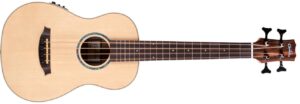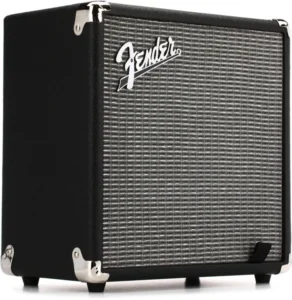What is Bass Suzuki Guitar?
Suzuki Bass Guitar is a teaching philosophy coupled with an established graded high-quality musical repertoire. The principal teaching philosophy centers on students learning music in the same way we all learn our first language: immersion!

Because Suzuki Guitar is linguistic in nature, particularly at the earliest stages, it has been found that students can begin learning this second, musical language shortly after they have begun acquisition of their first, spoken language. Most students can begin learning Suzuki Guitar as early as age three or four. For students interested in Suzuki Bass Guitar, instrument size limitations mean most students begin studying bass guitar around age nine or ten.
To the parent of a child of three or four with an interest in Suzuki Bass Guitar, I suggest you start your child early on classical guitar. This will ensure that instrument playing becomes a part of their daily routine from which they will not deviate with competing activities vie for their time later in adolescence. When the child reaches nine or ten years of age, they can then add bass guitar. Classical guitar skills apply to the bass guitar. To the older student, I suggest you start as soon as possible. It is never too late to begin!

I recommend young beginning students use an acoustic-electric bass guitar, such as the one pictured above. This will make practice time at home more enjoyable and give students the option of playing acoustically or amplified. I will help get the right size instrument for your child.
Misconceptions
Because of the many remarkable videos available of very young Suzuki students performing advanced repertoire, some people mistakenly believe that Suzuki Bass Guitar is a "children's method" not suitable for later beginners or adults. This is certainly not the case. Any person, at any age, with an interest in learning the guitar can thrive under the guidance of a certified Suzuki teacher. Dr. Berlin is certified in Suzuki Guitar. At this time, there is no Suzuki certification for bass guitar.
Another misconception is that students are taught by rote and that music reading is not emphasized. This is also not the case. It is for the pre-literate student that written music is not emphasized. As the student begins to become a literate person in their primary language (e.g. English), they are introduced to reading in a very natural, developmentally-appropriate fashion.
Students are trained to play by ear, not by rote. The difference may seem subtle to the casual readers, but it is substantial. Listening and mimicking is a natural process of language acquisition. Ear training is also used for older, literate students.
Principles of Study and Guidance
- The [student] should listen to reference recordings every day... to develop musical sensitivity. Rapid progress depends on this listening.
- Tonalization, or the production of beautiful tone, should be stressed in the lesson and at home.
- Constant attention should be given to correct posture and proper hand positioning.
- Parents and teachers should strive to motivate the [student] so [they] will enjoy practicing correctly at home.
(excerpted from Suzuki Guitar School, Vol. 1. Van Nuys, CA: Alfred Music, 2018, 4.)
The adult or self-motivated adolescent student will naturally not require the same level of external motivation as younger students. Nevertheless, others in the home should support and encourage the
Preparation for College, Career, and Beyond!
Suzuki Bass School volumes 1 through 5 have been published, with piano accompaniment books for each volume. Books 6 through 9 are still under development and will conclude at the college and professional level. A student beginning at age three or four with a support system in place who practices regularly can expect to complete the final book early in high school. When the students are ready to apply for college, their life-long dedication will cause them to stand out and be noticed for acceptance and scholarship. Even if the student does not study music in college, they will be equipped and primed for a life-long relationship with music through their bass guitar which will never leave them.

The Suzuki Bass Guitar Repertoire
Adapted for bass guitar by Dr. Berlin from Suzuki Bass School, Volumes 1–5
- Twinkle, Twinkle, Little Star Variations—Suzuki
- Lightly Row—Folk Song
- Go Tell Aunt Rhody—Folk Song
- Chatter with the Angels—Spiritual
- Song of the Wind—Folk Song
- May Song—Folk Song
- French Folk Song—Folk Song
- O Come, Little Children—Folk Song
- Lament—Bohemian Folk Song
- Perpetual Motion—Suzuki
- Allegretto—Suzuki
- Allegro—Suzuki
- The Little Fiddle—German Folk Song
- Sakura (Cherry Blossoms)—Japanese Folk Song
- French Folk Song—Folk Song
- May Time—Mozart
- Rigadoon—Purcell
- Minuet No. 1—Bach
- Etude—Suzuki
- The Happy Farmer—Schumann
- Moon over the Ruined Castle—Taki
- Theme from the Mahler Symphony No. 1—Mahler
- Goblin's Dance—Lyons
- Shortnin' Bread—Folk Song
- English Folk Song—Folk Song
- Long, Long Ago—Bayly
- March in G—Bach
- Moon over the Ruined Castle—Taki
- Minuet No. 2—Bach
- Ode to Joy—Beethoven
- Andantino—Enjoyable Morning—Suzuki
- Trilling Waltz—Dixon
- Sweet Georgia Brown—Bernie, Pinkard, Casey
- Largo from the New World Symphony—Dvorák
- Bourrée—Handel
- Gavotte—Gossec
- So What—Davis
- A Gaelic Melody—Minkler, arr. Dixon
- L'Elephant—Saint-Saëns
- Scherzo—Webster
- Theme from the Mahler Symphony No. 1—Mahler
- Chorus from Judas Maccabaeus—Handel
- Die Meistersinger—Wagner
- Tempo di Polacca—Simandl
- Gavotte—Bach
- La Cinquantaine—Gabriel-Marie
- Humoresque—Dvorák
- Sonata in E Minor—Marcello
- Two Octave Major and Relative Minor Scales
- How High the Moon & Ornithology—Lewis/Parker and Harris, arr. Rebeck
- Apres un Reve—After a Dream—Fauré, piano acc. Preucil
- Sonata in G Major—Adagio, Allegro, Grave, Allegro—Marcello, piano acc. Harbold
- Tenor Clef Preparation
- Tambourin—Rameau, piano acc. Harbold
- Canon a due—Gabrielli, transcribed by Fanelli
- Aria from Rigoletto—Verdi
- Concerto in F Major, Allegro moderato—Capuzzi, acc. arr. Harbold, cadenza by Rebeck